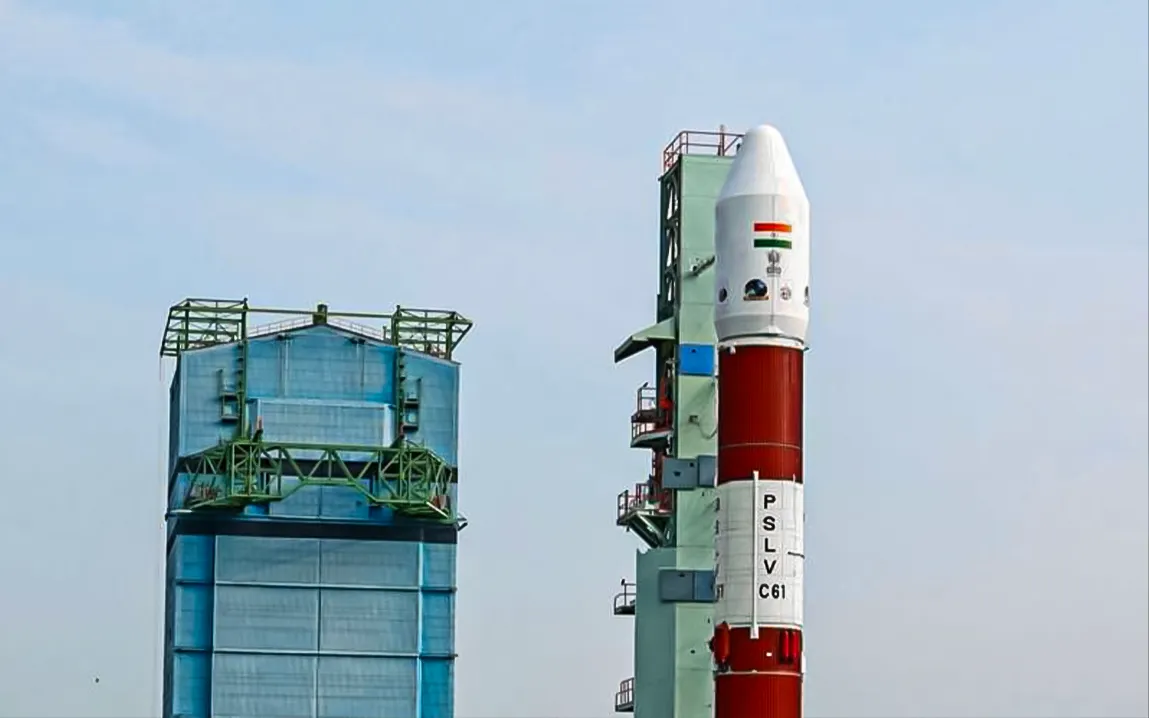The EOS-09 satellite took off from the Satish Dhawan Space Centre in Sriharikota on board the PSLV-C61, one of India’s most reliable rockets. The takeoff started as planned, but something went wrong with the third stage of the rocket. That segment of the journey is meant to push the satellite nearer to its ultimate orbit.
“During the third stage… there was a fall in the chamber pressure of the motor case, and the mission could not be accomplished,” said V. Narayanan, Director of ISRO’s Liquid Propulsion Systems Centre.
The satellite did not reach orbit. ISRO has since confirmed the mission failed.
A Setback for a Proven Rocket
This was the 63rd mission aboard a PSLV, or Polar Satellite Launch Vehicle. Reliable and successful, the PSLV has been one of the biggest workhorses for ISRO ever since the 1990s. In fact, this was only the third time it has failed.
Those previous two mishaps occurred in 1993, on its very first flight, and in 2017, when a heat shield malfunction prevented a satellite from being deployed.
ISRO’s PSLV has been at the forefront of launching India and international satellites. It has even launched path-finding missions such as Chandrayaan-1 and the Mars Orbiter Mission. It had launched 104 satellites in a single mission in 2017, a record then.
What Was the Mission About?
The specific orbital path allows satellites to pass over the same Earth region each day during their designated local time, which enables consistent imaging operations.
The EOS-09 spacecraft featured a Synthetic Aperture Radar (SAR) system that could systematically capture detailed high-definition images regardless of weather or illumination conditions. These satellites fulfill monitoring purposes for both environmental conditions and disaster response efforts as well as serving national security needs.
The mission terminated, however, before the deployment of the satellite.
What Went Wrong?
The issue occurred in the third stage of the rocket, which uses solid fuel to give the final push needed after the vehicle exits the dense layers of Earth’s atmosphere. A drop in chamber pressure, as confirmed by ISRO, meant the thrust wasn’t strong enough to complete the journey.
It’s not yet clear what caused the drop in pressure. ISRO will conduct a full analysis to understand what went wrong.
Past Failures and Comparisons
PSLV’s initial misfortune in 1993 emerged from software issues that caused the rocket to deviate from its path and collide with the ocean. The 2017 mission ended unsuccessfully because the heat shield did not unexpectedly detach from the satellite.
This latest incident adds a third failure to the otherwise strong record of PSLV, which has successfully completed dozens of missions.
Second Failure in 2024
This is the second failed mission for ISRO this year. In February, its GSLV rocket failed to place the NVS-02 navigation satellite into the right orbit. That mission had marked ISRO’s 100th spaceflight.
Sunday’s attempt with EOS-09 was ISRO’s 101st launch. The failure may put added pressure on the space agency to double-check its systems and avoid further setbacks.
India’s Broader Space Goals
The space program of India faced a major obstacle yet managed to achieve notable milestones throughout recent years. The year 2023 will be remembered because ISRO became the first space organization which successfully landed a vehicle near the Moon’s southern pole after their 2019 lunar mission ended in failure.
The Indian Space Research Organisation will probably experience a recovery following the failed operation because they will investigate the reasons behind the incident before creating their future plans.



